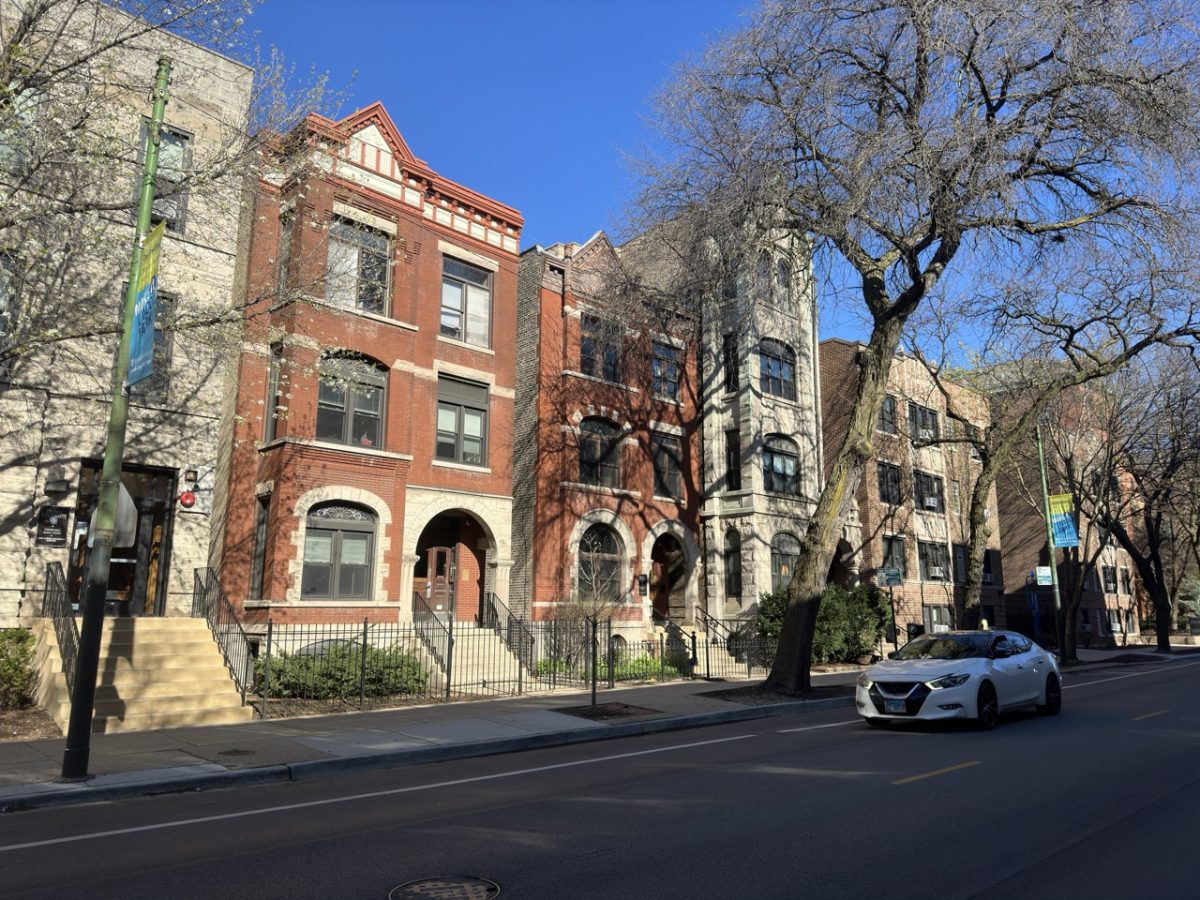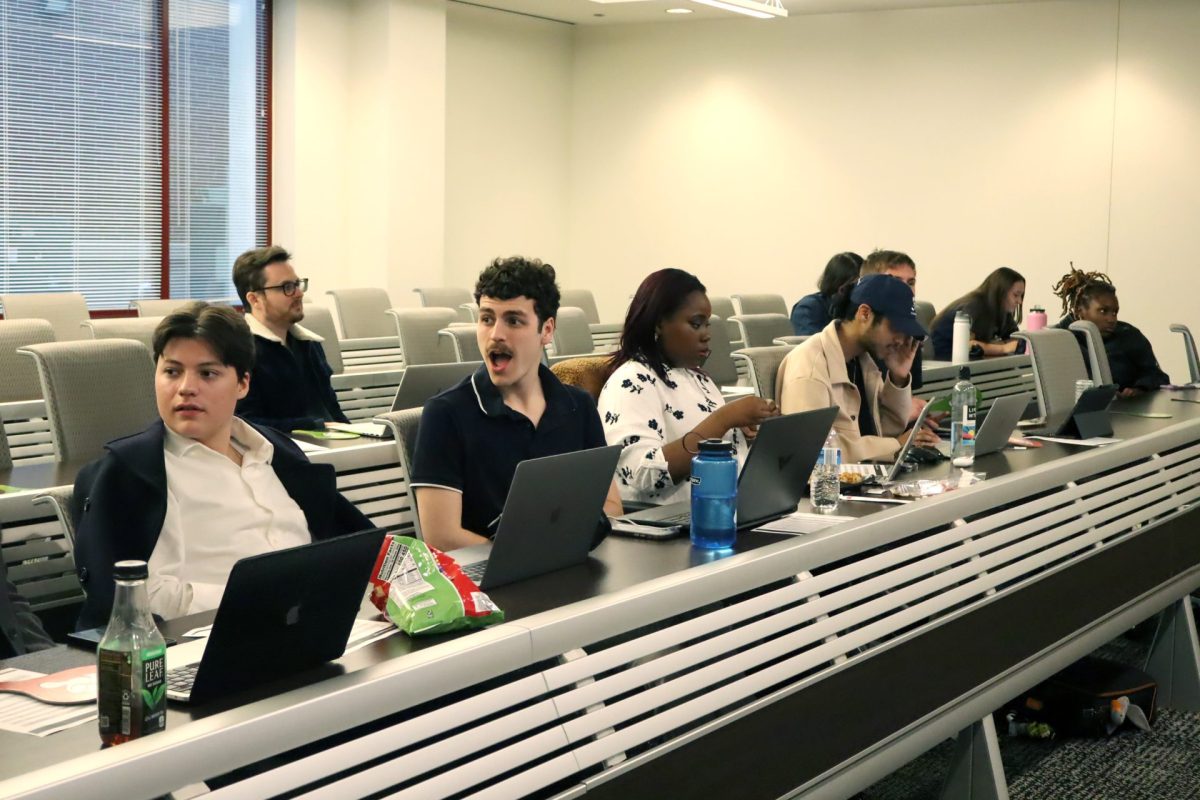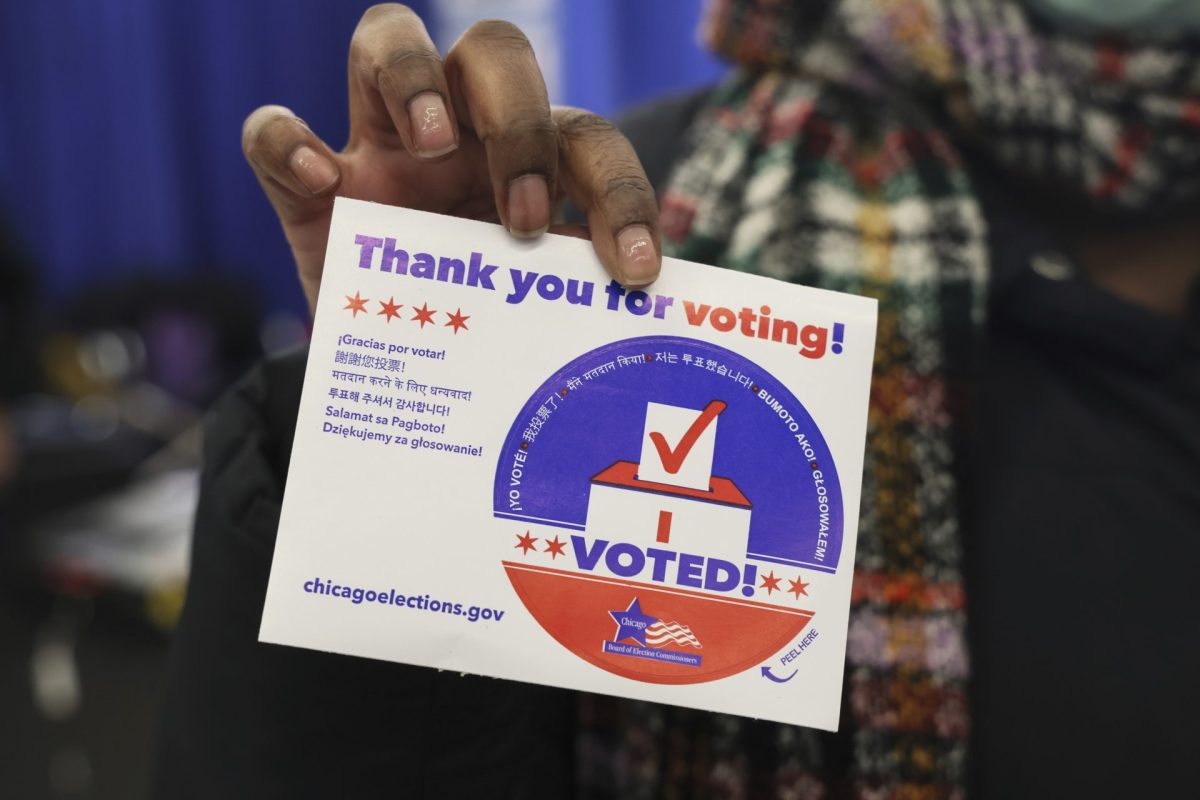Emotions ran high during a DePaul University community meeting held Thursday to discuss DePaul’s proposed Kenmore Green project.
Members of the community packed into the 103 auditorium in the Arts & Letters building in order to hear conclusions from DePaul, the Chicago Department of Transportation and the companies responsible for the study and planning of the project.
Allan Mellis of the Wrightwood Neighbors Association was one of the more vocal opponents to the plan.
“Tonight, I have not heard any mitigation to the parking issue, or the traffic flow issue associated with this plan,” said Mellis. “We are asking that DePaul continues to be a good neighbor to us, as we have to you”.
The project, which was initially part of DePaul’s 2009 Master Plan, would close Kenmore Avenue between Fullerton and Belden Avenues in order to create a pedestrian mall and green space. The project would eliminate 47 unregulated and free parking spaces on the street, much of which is utilized by DePaul students and faculty.
Many community members expressed concern that the elimination of these spaces would push the commuting students to park on other streets near campus and further exasperate the already frustrating parking situation in the densely populated neighborhood.
Another concern was the impact to the traffic at Sheffield and Fullerton, which is already a bottleneck and could be compounded by the closure of Kenmore. The study conducted by the firms Kenig, Lindgren, O’Hara, Aboona Incorporated found that the intersection was the most congested in the study area, especially during the morning peak hour.
KLOA submitted improvements at the forum in order to mitigate these issues, such as adding dedicated right turn lanes at the Fullerton and Sheffield intersection, and adding left turn lanes on the west, at Racine and Fullerton.
“Kenmore carries a relatively low volume of traffic. Sheffield and Clifton can absorb the traffic easily, especially if our modifications were implemented,” said KLOA principal Eric Russell.
Marty Oberman, a former Lincoln Park alderman, spoke out in favor of the plan, calling suggestions that DePaul would close other streets in the area if allowed to close Kenmore “scare tactics.”
“We live in a dense city. If you could solve the traffic and parking situation in Lincoln Park, you could be alderman for life,” said Oberman. “There’s always going to be traffic, there’s always going to be trouble parking. But when we overall enhance on-campus life, we enhance our neighborhood.”
32nd ward Alderman Scott Waguespack was also on hand to field questions from constituents, and he expressed frustration with the city since the ward redistricting would place DePaul in Michele Smith’s ward.
“The mayor has given us zero indication as to when (the redistricting) is going to happen, and the aldermen are left in flux,” said Waguespack.
“Michele’s and our ward have been working very closely together. We are going to gather all the information…and deal with it at the individual level,” said Waguespack.
According to Joe Antunovich, a representative from the architecture firm handling the Kenmore Green project, the project could potentially be completed within two or three years, at a cost to be determined. As a part of the project, the Seminary Hall townhomes that line the northeast corner of Kenmore and Fullerton would be replaced with a larger scale dormitory that would “keep the tradition and the style of the surrounding neighborhood,” said Antunovich.
DePaul would end up footing the bill for the project, not the taxpayer, said Kozoman. DePaul has already paid for improvements in the area, such as the pedestrian countdown signals at Fullerton and Sheffield and the high-visibility crosswalks at Belden and Sheffield Avenue.







